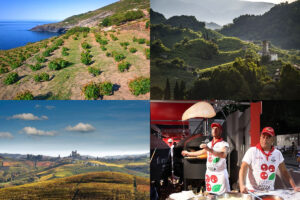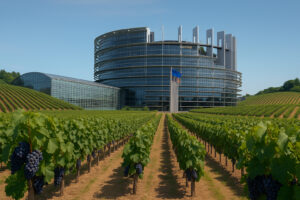“2009 was a year to forget” for Italian wine which saw a drop between 20% and 40% in wholesale prices of grapes compared to 2008: they were “mineral water prices, and wine trading (when there was any), was no better”, said Giancarlo Prevarin, President of the Association of Enologists, Assoenologi, at the Merano Congress until June 20th. Prevarin defines this situation “paradoxical” since “consumers, especially in restaurants, were still charged over five times more”.
The strategy to overcome the crisis, according to the manager of Assoenologi, Giuseppe Martelli, is to “break out of our shell and form a team: the only way for Italian wine to stay on top of leading markets is to leave out territorial and personal issues.
In the face of this data, “the only outlet is exports”, continues Prevarin “a segment where in 2009, the market was schizophrenic: an increase of 6.2% in volumes and a decrease of 6,1% in value, taking the average price per liter back six years and, there was a decrease from the previous year of 11.6%. If this trend, concludes Prevarin, lasts throughout 2010, many different entities will be in crisis, strangled by the lack of credit from banks and the rising defection of our customers”. Assoenologi warns that this situation also reflects negatively on the value of vineyards, except for some “oasis’”, “the average value of wine-growing areas fell 20% from 2006 to 2009”.
Assoenologi manager, Martelli, emphasizes that “a technician in a cellar must devote 25% of his time to bureaucratic issues”. This is a fourth of the total time that a winemaker dedicates to the wine cellar procedures. “It is unacceptable as well as an enormous cost,” adds Martelli, “in 1986 we had already pointed out that it was absurd for the Chamber of Commerce to attest the areas for vineyards, for inspectors to monitor vineyards, the Region to establish the wine policy and to assign controls to various organizations: all these entities do not communicate with each other and then they act autonomously”. Assoenologi hopes for a “prompt realization of a one-stop shop”.
For the record, the association has counted 21 different offices that check on winery procedures. “Recently even municipal offices have entered the game,” continues the manager of Assoenologi, “all these entities are called to do checks and inspections, which are also the responsibility of the local health organization (ASL), and they all come into the cellar, perhaps during the harvesting period, with different teams to check the same things”.
The long list of controllers does not end here: according to Assoenologi “engineers from ARPA (the Regional Agency for Prevention and Environment), the Icqrf
(Inspection for quality control and fraud), the Nas (anti-fraud authority), the Forest Rangers, and the Guardia di Finanza (the tax and fraud police) are also involved. Not to mention that the Fire Brigade, the Municipal Police, the Provincial Offices of the former Uma (Farm Machinery) that deliver and monitor the amount of diesel used in agriculture, can also happen by the winery”.
Copyright © 2000/2025
Contatti: info@winenews.it
Seguici anche su Twitter: @WineNewsIt
Seguici anche su Facebook: @winenewsit
Questo articolo è tratto dall'archivio di WineNews - Tutti i diritti riservati - Copyright © 2000/2025








































































































































































































